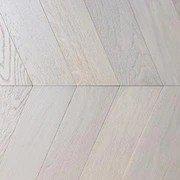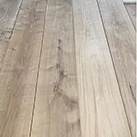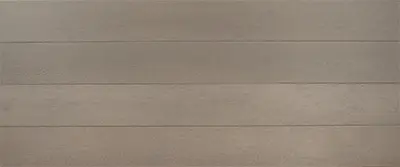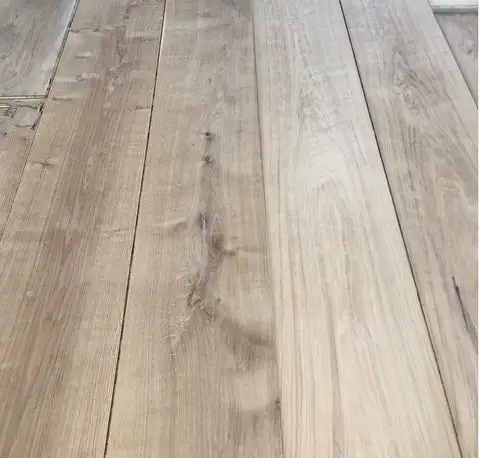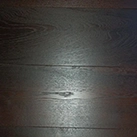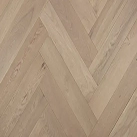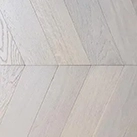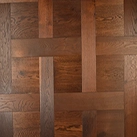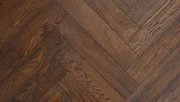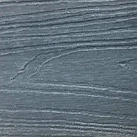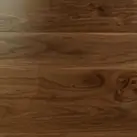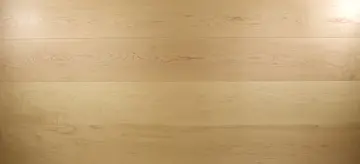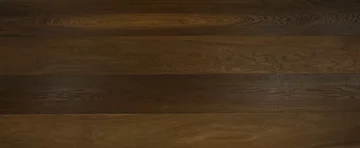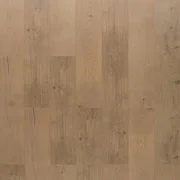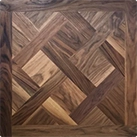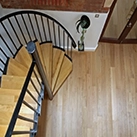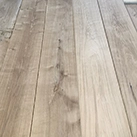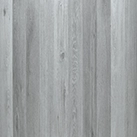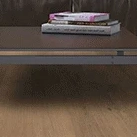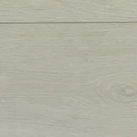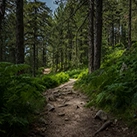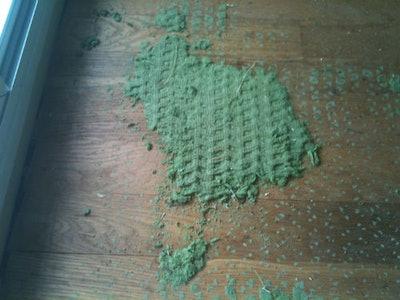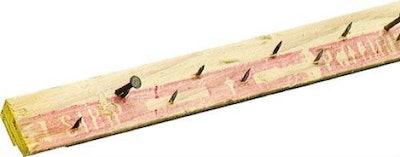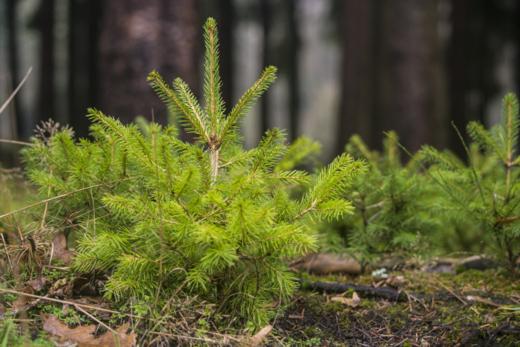Commercial wood flooring care is one of the most important routine tasks. Maintaining the beauty of wood floors in high-traffic these environments requires regular care and attention. By following essential care tips, you can keep your wood floors looking pristine for years to come.
It can be hard to maintain floors in busy areas.
We believe that commercial spaces need that extra help here and there to keep floors extra tidy.
So, let’s take a deep dive into wood care for busy-footed floors.
Understanding Wood Floors
Types of Wood:
Commercial wood flooring has various options, each chosen for its unique blend of durability and aesthetic charm. Among the top contenders, Oak, Maple, and Walnut stand out as popular choices.
Oak:
- Durability: Oak is renowned for its robustness, making it an ideal choice for high-traffic areas.
- Aesthetics: With a distinctive grain pattern and warm tones, oak adds a timeless elegance to any commercial space.
Maple:
- Durability: Maple is celebrated for its density and resistance to wear, making sure it lasts in busy environments.
- Aesthetics: The light, creamy colour of maple brightens spaces, creating an inviting atmosphere.
Walnut:
- Durability: While slightly softer than oak or maple, walnut’s hardness is sufficient for commercial settings with moderate traffic.
- Aesthetics: Its deep, rich hues and intricate grain patterns lend a luxurious and sophisticated touch to the ambience.
Types of Commercial Wood Flooring
Here at The Solid Wood Flooring Company, we specialise in floors for commercial settings with any budget. It’s important that we give you the best floor that suits your space and the amount of foot traffic you get.
- Solid Wood Flooring: This is crafted from single hardwood pieces, like those listed above. It’s not often used due to sustainability issues, so other options are preferred.
- Engineered Wood Flooring: Engineered wood flooring consists of a solid wood layer on top, supported by a fast-growing hardwood back. This allows the wood to expand and contract with changes in humidity and temperature.
- Vinyl Wood Flooring: Vinyl or LVT (Luxury Vinyl Tile) flooring, traditionally made of plastic, has evolved. Impervia, a rigid composite flooring similar to LVT, is now available as an environmentally friendly option with no harmful emissions.
- Laminate Flooring: Laminate flooring replicates the appearance of wood using a photographic layer under a clear protective layer. It is a cost-effective and low-maintenance choice made of high-definition paper and compressed with a medium or high-density fibreboard.
Preparing for Maintenance
Making sure your commercial wood flooring care can withstand high-traffic spaces requires proactive measures and thoughtful choices. The preparation and selection of the right finish contribute immensely to the overall care and resilience of your wood flooring.
Preventative Measures:
1. Strategically Placing Rugs and Mats:
These add some interesting visuals to the space and act as protective barriers, preventing direct contact between people’s shoes and the floor.
Tastefully placing rugs at entrances, hallways, and other busy zones can help your floor last that extra bit longer.
2. Using Furniture Pads:
Furniture is the biggest culprit in scratching the protective layers of your wooden floors.
These soft, protective pads are fixed to the legs of furniture, creating a buffer between the floor and any potential abrasions.
Regularly checking and replacing worn-out pads ensures the floor is constantly protected, particularly in areas where furniture is frequently moved.
Choosing the Right Finish:
1. Opting for Durable Finishes:
Durable finishes, such as oil-based finishes, create a strong protective layer on the surface. These finishes act as a shield, saving it from scratches, stains and general wear and tear.
UV-cured oil finishes, in particular, form a hard, resilient coating that is highly effective in high-traffic commercial settings, offering a glossy or matte appearance depending on preference.
2. Considering Eco-Friendly Options:
These finishes have lower levels of volatile organic compounds (VOCs), reducing the emission of harmful substances into the air.
Plant-based oils provide a protective layer while minimising the environmental impact, making them an eco-friendly choice for commercial wood flooring care.
Sustainability doesn’t have to come at the expense of performance, so it’s a viable and responsible option for businesses striving to reduce their carbon footprint.
Cleaning Routines for Commercial Wood Flooring Care
Daily and Light Clean
What You’ll Need:
- Microfibre flat mop.
- Alternatively: A vacuum cleaner with a soft brush head.
Steps for Daily Cleaning:
- Sweep or vacuum to remove loose dirt and debris.
- Damp mop the floor, and mop up any excess liquids.
- Wipe up spills immediately with a dry or slightly damp cloth.
Regular Maintenance
- Set a routine schedule to catch issues early: Consistent monitoring allows for proactive measures, addressing potential problems before they escalate.
- Check for scratches and wear: Identifying these issues early enables timely intervention and preserves the overall integrity of your wood floors.
- Use touch-up kits: These kits often contain colour-matched solutions that seamlessly blend with the existing finish, restoring the appearance of your floors.
- Professional sanding and refinishing: This approach involves removing the existing finish, sorting deeper problems, and applying a new protective layer. We recommend looking into professional services for this type of treatment.
Deep Cleaning
What You’ll Need:
- At least 40ml of Blanchon Natural Soap (white for white-finished floors and colourless for all other oil-finished floors).
- A flat mop.
- Hot, not boiling water.
Steps:
- Mix at least 40ml of soap with hot water, and have another bucket of hot water to rinse the mop.
- Soak the mop in the solution and squeeze out as much excess water as you can.
- Clean the floor whilst moving the mop in the direction of the grain.
- Re-soak the mop for every square metre, depending on the state of the floor.
- Once finished, allow the floor to dry completely before putting it to use.
Dealing with Spills and Moisture
When caring for your space, managing spills is crucial to having a commercial wooden floor.
You can easily keep your floor in top condition by taking quick action.
Immediate Steps:
1. Wipe Spills Promptly:
Time is of the essence when dealing with spills. Immediately wipe spills with a dry or slightly damp cloth to prevent liquids from penetrating the wood surface. Swift action minimises the risk of staining and ensures that moisture doesn’t seep into the wood fibres, preventing potential damage.
2. Avoid Excessive Water:
While cleaning spills, it’s essential to avoid excessive water on the floor. Wood is susceptible to warping when exposed to prolonged moisture. Use a well-wrung cloth during the cleaning process to ensure that water is effectively absorbed without saturating the wood. This helps maintain the structural integrity of the wood.
Wood Floor Refinishing
Signs for Refinishing:
1. Scratches Penetrating the Finish:
Over time, scratches may accumulate on the surface of your wood floors. If these scratches penetrate the finish and expose the bare wood, it’s a sign that refinishing is needed. Ignoring such scratches can lead to more extensive damage.
2. Dull or Uneven Appearance:
A dull or uneven appearance is indicative of wear and tear on the protective finish of your wood floors. This can result from foot traffic, furniture movement, or exposure to sunlight. Refinishing becomes necessary to restore the lustre and evenness of the wood surface.
Options:
1. Professional Refinishing:
For a complete overhaul of your wood floors, professional refinishing is a recommended option. Trained experts will sand down the existing finish, address any imperfections, and apply a new protective layer. Professional refinishing ensures a thorough restoration, extending the life and beauty of your wood floors.
2. DIY Options for Minor Touch-Ups:
DIY wood floor refinishing kits offer a practical solution. These kits often include touch-up solutions and protective coatings. While suitable for addressing small issues, it’s essential to recognise the limitations of DIY options and consult professionals for more extensive damage.
Sustainability and Eco-Friendly Practices
Commercial wood flooring care comes with its own set of responsibilities. As a business or open property, it’s up to you to make decisions that help decrease environmental strain.
By incorporating eco-friendly products and responsible maintenance, you can ensure that your wood floors align with environmental consciousness.
Eco-Friendly Products:
1. Low-VOC or VOC-Free Finishes:
Opt for finishes labelled as low-VOC (Volatile Organic Compounds) or VOC-free. These formulations emit fewer harmful substances into the air, contributing to better indoor air quality.
Low-VOC or VOC-free finishes are environmentally responsible choices that promote a healthier and more sustainable living and working environment.
2. Environmentally Friendly Wood Floor Cleaners:
Choose wood floor cleaners specifically designed to be environmentally friendly. These cleaners typically have minimal impact on ecosystems and water sources.
Look for products with biodegradable ingredients, ensuring that their disposal has minimal environmental adverse effects.
Responsible Maintenance:
1. Recycle or Repurpose Wood Flooring Materials:
Whenever possible, explore recycling or repurposing options for wood flooring materials. Recycling wood reduces the demand for new resources.
Consider repurposing wood planks into furniture or other decorative elements, extending the lifecycle of the material and reducing waste.
2. Support Suppliers Committed to Sustainable Sourcing:
Choose wood flooring suppliers committed to sustainable sourcing practices. This involves harvesting wood from responsibly managed forests, ensuring the conservation of biodiversity and the well-being of ecosystems.
Suppliers with certifications such as Forest Stewardship Council (FSC) or other recognised sustainability standards demonstrate a commitment to ethical and environmentally responsible practices.
Additional Considerations:
1. Energy-Efficient Manufacturing:
Opt for products produced in energy-efficient facilities, minimising the carbon footprint associated with their production.
2. Reclaimed Wood Options:
Reclaimed wood brings a unique character to your floors and repurposes existing materials, reducing the need for new timber extraction.
3. Community and Environmental Initiatives:
Support brands and manufacturers actively involved in community and environmental initiatives. Companies engaged in tree planting, habitat restoration, or other eco-friendly projects contribute positively to the environment.
Final Thoughts
It’s so important to focus on commercial wood flooring care as much as you can, especially because of the risks of wear and tear over time.
For high-quality commercial wood flooring options, visit The Solid Wood Flooring Company. Upgrade your commercial space with durable and beautiful wood flooring today!
Carpets have been around a very long time. The oldest known example of a carpet (the Pazyryk carpet) is over 2,000 years old and was discovered in a Siberian tomb. Of-course carpet manufacturing processes have moved on and now wall-to-wall carpets are commonplace.Does that mean that they are an ideal go-to floor covering? Particularly over tired wood floors?
You’d might think that we’re biased against carpets, given the fact that we are manufacturers of wood and stone composite flooring – and you’d be right. However, you must take into consideration that we have had ample opportunity to add carpets into our product range over the years. In our due diligence to ensure our products are not only environmentally friendly but also healthy, we came across a number of factors of carpets that we believe you should be aware of:
- They trap moisture. Whilst in some conditions this can relatively quickly be released, if it’s on a wood floor base, it’ll soak the timber below eventually leading to significant damage of both the carpet and the wood floor.
- Animals are more likely to soil carpeted areas. Given carpets proclivity for trapping liquids, this acidic and damaging ‘mess’ will require chemical cleaning to remove.
- Because of the moisture retention, it’s the ideal breeding ground for mold and mildew.
- Carpet beetles, moths, rodents (to name a few) will readily eat and nest in carpet.
- Dust, pollen and other airborne particulates are easily trapped in the fibres of carpet. It’s well known that Doctors will advise someone with allergies/respiratory issues to remove any carpets from the home.
- The underlay for carpets often breakdown, the residue of which will leach into a timber subfloor causing lasting damage.
- Carpet will have a lengthy ‘off-gassing’ period. You may have experienced this in a room with a new carpet, that smell is a combination of various VOCs and other airborne particulates which are hazardous to health.
As further evidence to the above, if you’ve ever seen carpet being removed, you’ll see the grime and dirt on the underside as well as possibly seeing the various colonies of insects and alike that have taken up residence. Add the fact that it will sit in landfill for many, many years without decomposing and you can quickly see it has a deleterious impact on both the environment and our health.
Fitting carpet over a wood floor
In addition to the realities what carpet does when in situ, some of the most telling and permanent damage from carpets comes with its installation.
The carpet gripper, which does ‘as it says on the tin’, is installed around the perimeter of the room. It is nailed into place and on the surface has a run of small sharp protrusions to hold the carpet in place. This is highly effective in gripping a carpet and the timber subfloor; however, they also easily pierce and tear skin if revealed and on removal are capable of lifting timber boards.
The carpet gripper, which does ‘as it says on the tin’, is installed around the perimeter of the room. It is nailed into place and on the surface has a run of small sharp protrusions to hold the carpet in place. This is highly effective in gripping a carpet and the timber subfloor; however, they also easily pierce and tear skin if revealed and on removal are capable of lifting timber boards.
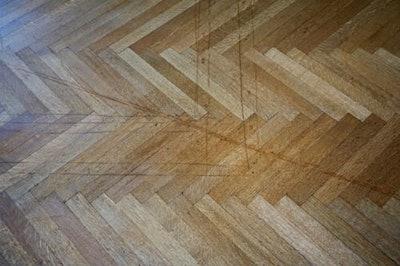
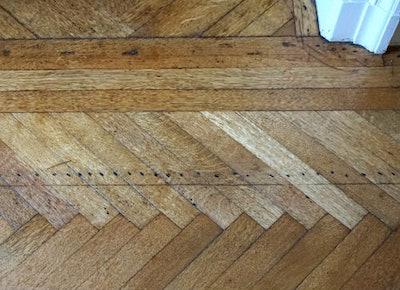
The image above shows cut marks on a beautiful, old herringbone floor (the likes of which could cost over £100m2 to have in your home). The damage is the result of a carpet fitter’s blade. Granted, this is an installer issue, not inherent with carpet itself, but it is a common problem. The correct method of installation would be to measure and cut the materials before bringing them into the room (or only cutting on a protected surface). What tends to happen is that the installer takes their knife, cuts through the carpet/underlay and into the floor as well. This leaves a deep gauge in the wood.
This provides any trapped moisture a direct route into the core of the wood floor which, at best, will water stain and at worst, cause severe warping and failure.
Restoring a wood floor is not always a straightforward task, particularly when dealing with deep cuts or nails that limit the extent to which the floor can be sanded. In such cases, filling may be necessary to minimize the need for extensive sanding. Additionally, if the floor is stained, completely eliminating the marks may prove challenging. The alternative of replacing boards, especially in older installations, can be a complex endeavour, leaving homeowners with the option of darkening the floor to conceal imperfections.
In a nutshell, covering a wood floor with wall-to-wall carpet is not an ideal solution. It poses risks to the floor’s integrity, is not environmentally friendly, and conceals a premium product that often just requires some tender loving care for rejuvenation.
For spaces with structurally sound but otherwise unusable wood floors, an excellent alternative is to use our Impervia rigid composite boards. These boards are waterproof, offer a realistic wood effect, and come with a non-toxic IXPE backing layer that preserves the underlying wood floor. Not only do they have a longer lifespan, but they also provide a significantly more hygienic option compared to carpets. Furthermore, they can be easily removed and reused elsewhere if you decide to restore the wood floor in the future.
Let us know if you’re working on a project with this type of conundrum. We’d be happy to help.
The below information was taken from a report by PEFC as we are a certified member
UK Forestry
The total area of woodland in the UK is 3.17 million hectares representing 13% of the total land area. The woodlands can be divided into three distinct categories: plantations, semi-natural woodlands, and mixed woodlands.
Plantation forests in the UK are predominantly composed of non-native coniferous species. They are often planted on economically marginal agricultural land and, in some instances, on areas previously cleared of ancient semi-natural woodlands (ASNW). Sitka spruce (Picea sitchensis) from North America plays a crucial role in the commercial foundation of the UK forest industry, while Scots pine (Pinus sylvestris) stands as the sole native conifer of economic significance. Approximately a dozen conifer species are commonly utilized in forestry.
The UK’s semi-natural woodlands are made up of broadleaved trees interspersed with areas of scots pine, yew and juniper. Native woodlands are of particular value to UK biodiversity, representing a range of UK BAP habitats supporting many important species. The creation of native woodlands has been the focus of woodland expansion schemes in recent years.
Timber production and recreation are important uses of semi-natural woodland, but careful management is required to avoid conflict with wildlife interests. Ancient semi-natural woodlands are especially valuable, as some are remnants of the original post-glacial forest.
Small mixed woodlands, comprising both native and non-native tree species, are scattered across numerous farms and private estates in the UK. These woodlands serve the dual purpose of providing shelter for livestock and enhancing the landscape, representing an important yet often underutilized timber resource.
Wood pasture and urban trees make significant contributions to the UK’s forest resources and they add valuable diversity to the ecosystem.
The Forestry Commission serves as the department of Forestry for the Westminster Government and within the devolved administrations of England, Northern Ireland, Scotland and Wales. It holds responsibility for forest legislation and policy in Great Britain. The UK Forestry Standard and the Forestry Act 1967 form the basis for legal and sustainable management.
The national forest certification standard for the United Kingdom is the UK Woodland Assurance Standard (UKWAS). Approximately 1.5 million hectares of the UK woodland area is certified to the UKWAS standard, representing 44% of the total woodland area.
Extensive programs focusing on woodland diversification are underway, aiming to improve landscape impacts, ensure habitat continuity, enhance biodiversity provision, maintain timber supply and create opportunities for recreation. Restoration of semi-natural woodlands and creation of new native woodland habitats are also policy priorities, along with the creation of new woodlands on urban fringes. Valuable habitats, such as ancient woodland remnants, are protected as part of plantation management.
Forest Ownership in the UK
73% of the UK’s woodland resource is privately owned – by individuals, family trusts and charitable trusts or companies. It is estimated that there are approximately 40,000 private woodland owners, all of which own areas greater than five hectares.
Typically, woodlands owned by private and family interests are a part of mixed estates or are on farms. There are thousands of small farm woodlands, but very few owners with more than 1,000 hectares of woodland. Management of woodlands for game is an important objective on many estates with woodland and on some farms. Larger family estates and company-owned forests typically emphasize timber production. However, an increasing number of woods are now managed specifically for recreational and conservation purposes by charitable trusts and private owners.
The remaining 27% of woodlands is owned publicly, the bulk of it managed by the Forestry Commission and its devolved bodies (e.g Forestry Commission England and National Resources Wales). Some woodlands are owned and managed by other public agencies, including local authorities.
For sustainable wood flooring options, browse our extensive range of products or speak to your experts.
The best trees for absorbing carbon
One of the best tree species for absorbing carbon is oaks, thanks to their large canopies, dense wood and long lifespans. Other top carbon-absorbing trees include the common horse-chestnut, black Walnut, London plane, and American sweetgum. However, variety is best.
What happened to the trees in England?
Nowadays, about 13% of Britain’s land surface is wooded. The country’s supply of timber was severely depleted during the First and Second World Wars, when imports were difficult, and the forested area bottomed out at under 5% of Britain’s land surface in 1919.
What is the best tree to plant for climate change?
Broadleaved species – such as oak, beech and maple – are best because they have a larger surface area of leaves which generates more photosynthesis, whereas conifers absorb more heat.
Which country has the most afforestation?
What country cuts down the most trees in the world?
According to the FAO, Nigeria has the world’s highest deforestation rate of primary forests. It has lost more than half of its primary forest in the last five years. The causes cited are logging, subsistence agriculture, and the collection of fuelwood. Almost 90% of West Africa’s rainforest has been destroyed.
Afforestation site visit with ClimatePartner UK
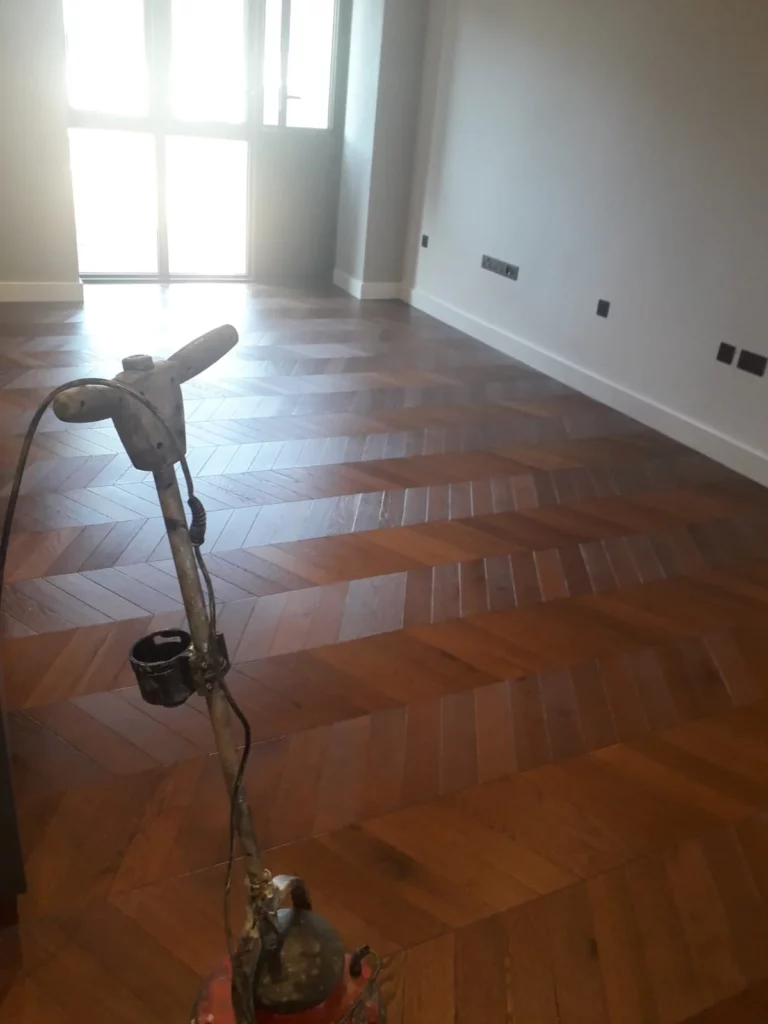
After 20 years of advising on wood flooring installations, we still find that builders can destroy beautiful floors.
We always advise that the floor should be the very last product to be installed in any situation. All wet works and snagging should be completed before any wood flooring is delivered to the site.
If for whatever reason the floor needs to be installed before this, then we insist on the floor being protected if any other works are going to be carried out after installation. You should use a breathable membrane and then a hardboard to fully protect the floor. Make sure there are no gaps anywhere for any dust (especially plaster dust or plaster) to penetrate and get into the surface of the floor.
Please see the image below where plaster dust got onto the surface of the floor.

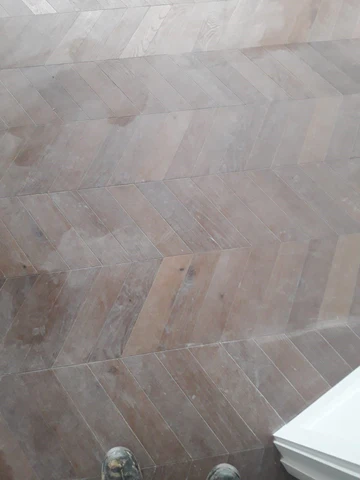
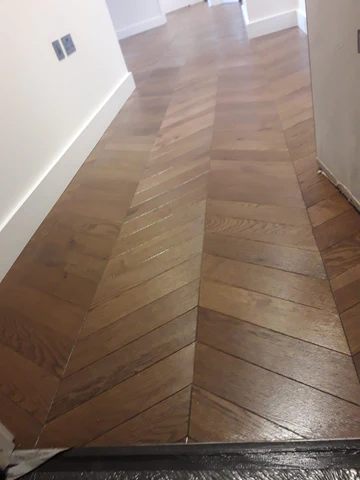

Plaster dust and wet plaster are corrosive and will destroy any engineered wood floor surface. The worst action we find is that rather than using a powerful hoover machine with a brush (but with no bar underneath, which can damage a floor), people use water and a mop. All this will do is make the plaster dust wet and corrosive as it will “suck” up the water and have a whitening effect like the image below.
Below you can see what has happened by doing this and how the original floor looked.
The only solution to this is to get a professional floor finished or sometimes a French polisher to resurrect the floor. Normal cleaning will not get rid of what you see in the images because it has destroyed the finish and penetrated the grain of the wood.
You can find out more about installing and maintaining all our engineered wood flooring here.
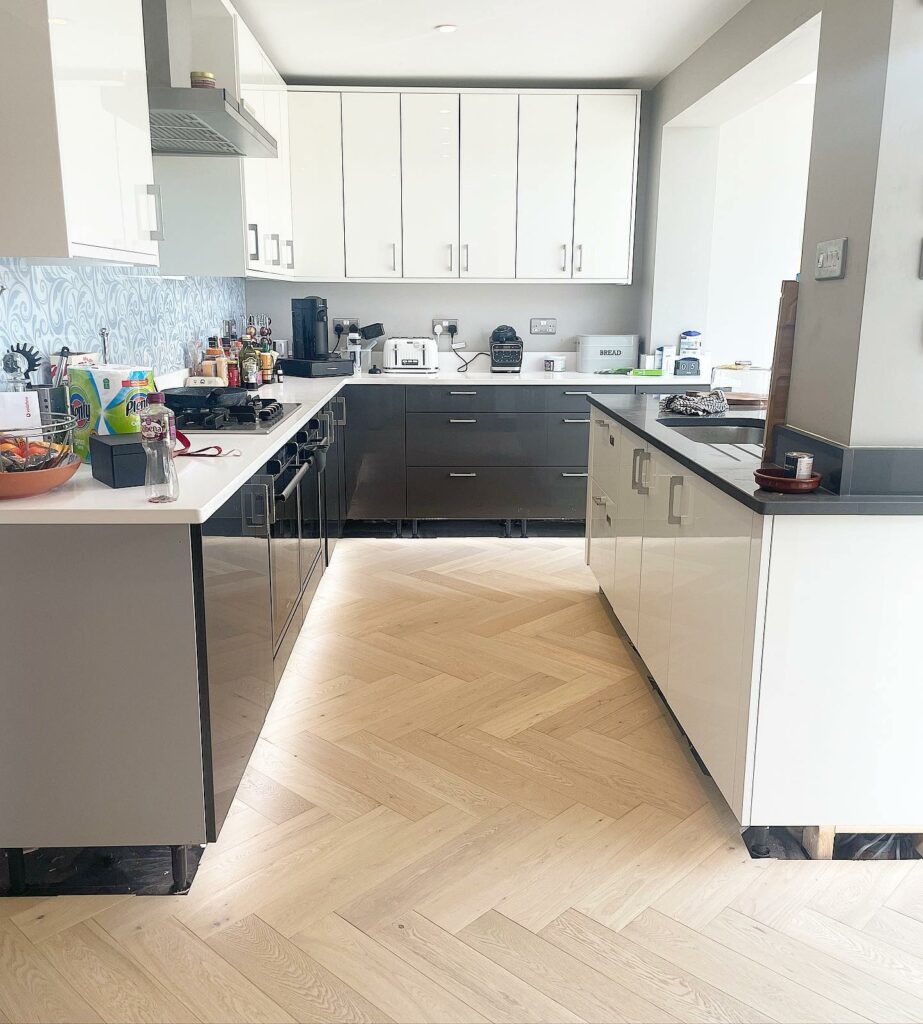
Our Light Brushed Raw Timber UV Oiled Oak Herringbone Parquet flooring was recently used in an open plan kitchen, diner and living area within a residential home.
This product creates a light engineered floor compatible with underfloor heating. It’s UV oil finish creates a good, hardwearing finish suitable for your home and other residential environments. You can find out the benefits of choosing engineered wood flooring for your home and residential projects here.
Raw Timber oil leaves the oak with its natural colour and finishes, rather than changing its natural look. Perfect for classic and traditional designs, it can look and feel like unfinished oak, but comes with a durable finish thanks to being cured through our factory process.
A QUICK GUIDE TO FUMED OAK FLOORING
There are many ways to colour oak flooring, and one of the best is to fume the boards. In old stables with oak beams, you will see the effect created by horse’s excrement where the steam rises, which among other things, contains ammonia. This darkens the oak over the years by reacting with the natural tannins of the oak. The result is a very warm brown old-aged oak colour. This is the best way to create some “Grey” oak floors as well, where the fuming time is much shorter.
Other methods include chemical staining, water-based stains and reactive stains. Water-based stains are not very good as the colour will easily scratch. A lot of our competitors state their boards are fumed, but in reality, they are stained.
We use heated sealed containers to fume our fumed oak wood flooring. Solid Oak is impossible to fume over a short period, so we fume our oak veneers all the way through. Fuming can take anywhere from 7 hours to 7 days, depending on how dark the final wood floor needs to be.
To reduce colour variation, we use coloured oils so that any future damage is easy to repair. You can find out more about how we fume and colour our engineered wood flooring here.
INTERIOR DESIGN ADVICE: NEVER BUILD ONTO A WOOD FLOOR
Wood doesn’t provide a good foundation to build on. Therefore, it is important to design any cabinets and internal furniture with their own structural base. By not sitting them directly on wood flooring, the floor’s finish can be easily repaired or removed should any damage occur.
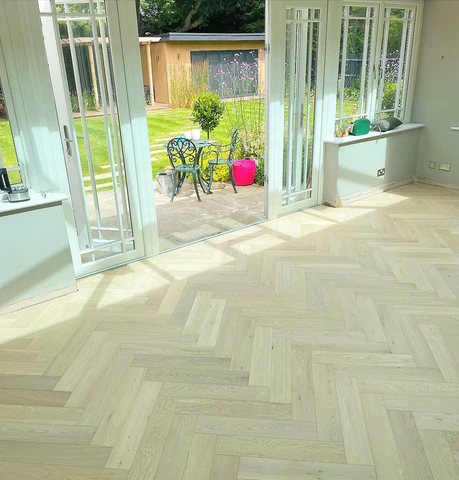
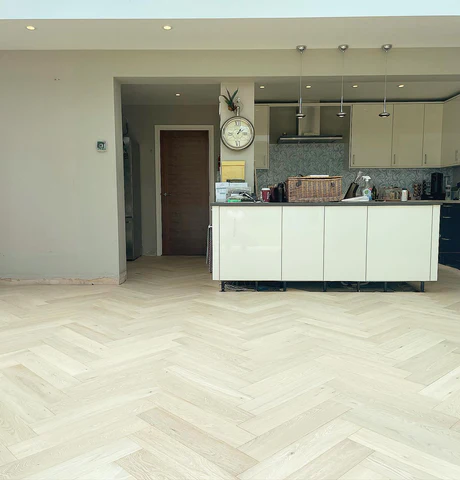
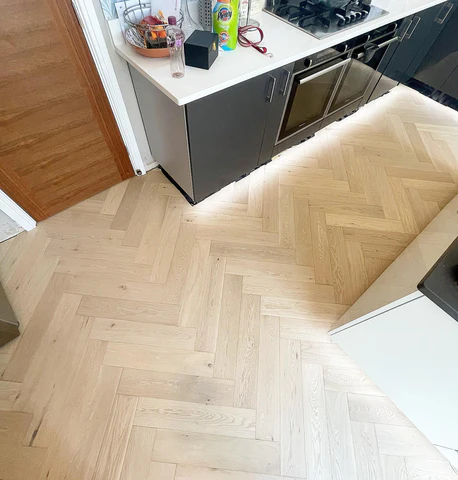
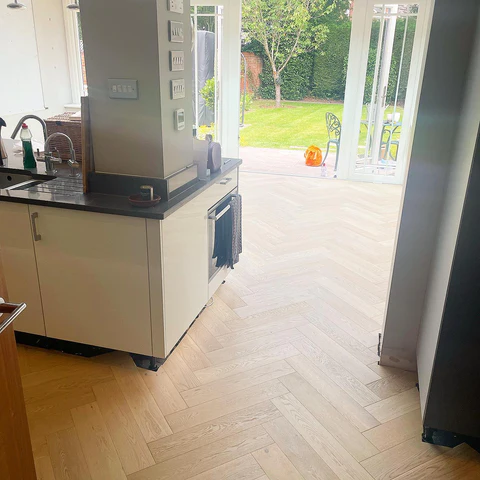
Remember, wood flooring should never be used as a foundation, even if it is fully bonded, and building cabinets or stud walls onto any wood floor would be asking for serious trouble and remain the responsibility of the designer or specifier.
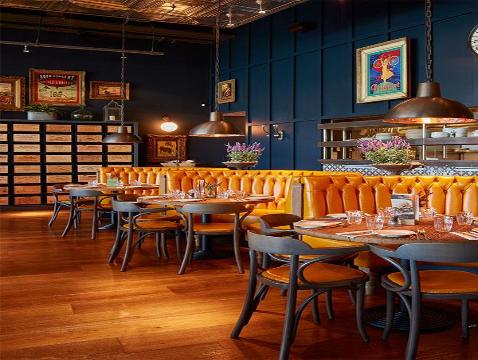
We pride ourselves on offering high-quality commercial flooring. It’s at the heart of our mission and takes us back to our roots.
Driven by his work in the development business on Grade I and II listed properties in the 1980s, our CEO and Founder Martyn Ryder was inspired to create engineered hardwood flooring tailormade for the commercial industry.
We’re motivated by service, quality, and sustainability. It’s our mission to bring state-of-the-art industrial flooring to the projects that matter.
It’s why we collaborate with architects and interior designers. Our commercial flooring combines the durability that high-traffic areas demand with the high-quality finishes they deserve.
Our range of engineered wood flooring is built for commercial properties, from hotels and restaurants to shopping floors and showrooms. Read on to find out why.
FLOORING MADE TO BE MULTI-PURPOSE
Commercial projects come with unique spaces to design. By investing in innovation, we afford interior designers’ new levels of imagination.
All our engineered boards can be used for cladding walls or bar fronts to create an atmosphere and transform spaces. By offering multi-purpose boards, interior designers can create cohesion and consistency by matching up the flooring with the walls and bar fronts.
Over the years, we’ve worked with high-profile restaurants like Bubba Gump’s Shrimp Company and Marco Pierre White’s Steakhouse to hotels such as Spitbank Fort. All of these clients have used our products for multi-purposes to bring their projects to life.
SUSTAINABLE INTERIOR DESIGN FOR COMMERCIAL PROPERTIES
Sustainability is in our DNA. It’s why we’re committed to helping deliver long-lasting high-quality design with low environmental impact.
Working closely with interior designers, we use and repurpose all of the timber wood we buy. This allows us to make unique designs without compromising our commitment to bettering our planet. Using rustic grade materials, we create engineered boards via scouring and brushing to offer a reflective surface.
We ensure our materials come from certified, sustainable and well-managed forests by working with the FSC®️ and PEFC™️. In addition, as part of our collaboration with Gone West, we plant three new trees for every one we cut down. All in all, we’re creating sustainable materials for sustainable interior design.
DURABLE BY DESIGN
Whenever you’re working on commercial projects and properties, it’s important to consider how durable everything is. Especially the flooring. If you’re catering for high-traffic areas, such as hotels, restaurants, and offices, you’ll want the flooring to be able to withstand it.
The good news is that engineered wood flooring takes top marks. Its veneer means it can be sanded down and refinished several times, so it can last for many decades. It also means if a project’s design changes, the flooring can do without trouble.
Better yet, it’s suitable for moisture-prone areas like basements and bathrooms, covering every inch of commercial space. Its installation means it can tolerate more moisture than solid wood without showing damage or warping.
BE INSPIRED BY OUR PROJECTS SO FAR
We know we buy with our eyes, and we design with them, too. That’s why we document the projects we work on, showcasing how we help clients achieve their dream floor. Get inspired for your next residential project with some of our favourites.
BISTROT PIERRE RESTAURANTS
Bistrot Pierre has been serving great-value French-style dishes inspired by their chefs’ travels for 25 years. We’ve been supplying their flooring for over 3 years, helping them create the stylish, relaxing environments their restaurants thrive on.
The restaurant chain chose us for our quality engineered wood flooring, our sustainability principles, and our price. As manufacturers of engineered wood floors, we cut out the middlemen so that commercial clients get the best flooring at the best price.
Our Unfinished Double Brushed Fumed Oak Flooring was chosen to create a dark and intriguing tone, whilst the double brushing created deep grooves along the board. Not only is this ideal for durability, but for catching colour oils to create limited effects. We did this using coloured and hard wax oils on-site, making it sustainable and easy to maintain, too.
You can learn more about our work on commercial properties like restaurants here.
THE PLACE APART HOTEL IN CENTRAL MANCHESTER
We’re not just commercial experts, we’re listed property specialists too. The Place Apart Hotel required our experience and expertise to help manufacture a unique chevron board during the refurbishment of its Grade II listed building.
Awarded Grade II status by English Heritage in 1998 for its important cultural and architectural legacy, the former railway warehouse was built in 1867 during Manchester’s time as the number one centre for the cloth trade. Retaining the building’s original features, it was transformed into The Place Apart Hotel, using its impressively crafted iron, stone and brickwork.
Working with the project’s contractors, Cost Consultants, and architects Archer Humphryes Architects, we outlined what the client wanted and produced 3 variations before they chose to move ahead with our Fumed Antique Chevron Parquet Band Sawn Finish Wood Flooring. The band-sawn surface offers a fantastic texture, finished with a matt UV oil to offer an extreme colour variation and look that’s unique to them.
You can learn more about our work on commercial properties like hotels here.
VOLVO SHOWROOMS
Luxury Swedish car manufacturers Volvo decided to rebrand all their distributor’s showrooms to promote their sustainability values in terms of both their vehicles and their commercial properties.
Working closely with their architects and interior designers, we chose to move forward with two types of flooring: Natural European Oak Flooring (Oiled Finish) and Fineline Oak Flooring.
Using timber floors is one of the most sustainable options available, and these oiled floors are perfect for car showrooms. After completing a full display mock-up of a showroom at the annual Volvo dealership convention, our floors are now being fitted across the country.
You can learn more about our work on commercial properties like retail and showrooms here.
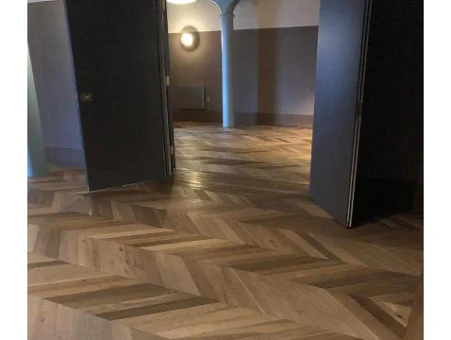
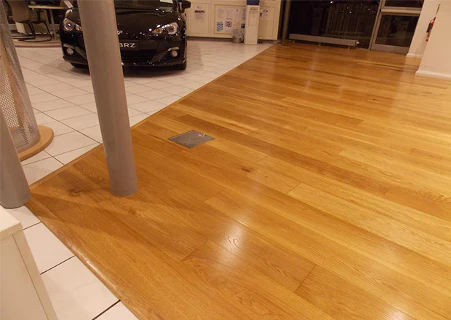
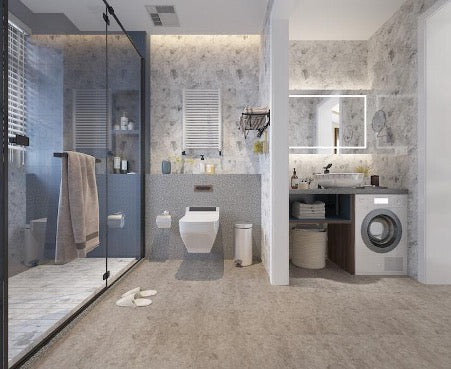
When it comes to interior design for residential properties the initial planning process is more important than the construction process. You take a blank canvas and paint it with the possibilities of living. And every grand design starts with a solid base. Or shall we say floor.
We work closely with interior designers to manufacture and supply engineered wood flooring that fits the specific briefs residential properties require. Whether it’s a bespoke floor or our unfinished engineered flooring, we offer the opportunity to design a space’s atmosphere with its own unique colour and finish.
But picking the right type of flooring for residential property isn’t easy. With plenty to choose from, there’s much to consider. That’s why we’re lending a helping hand with our quick guide to flooring types for residential projects. Read on to find out about the different types and the benefits they can bring to your next project.
WHAT TYPES OF FLOORING DO THE SOLID WOOD FLOORING COMPANY OFFER?
We specialise in manufacturing and supplying engineered wood,parquet, and optimum flooring. In addition, we offer luxury planks and tiles as part of our Impervia range. All of our engineered wood flooring is certified by the Forest Stewardship Council (FSC®) and Programme for the Endorsement of Forest Certification (PEFC™). This means our materials come from certified, sustainable and well-managed forests.
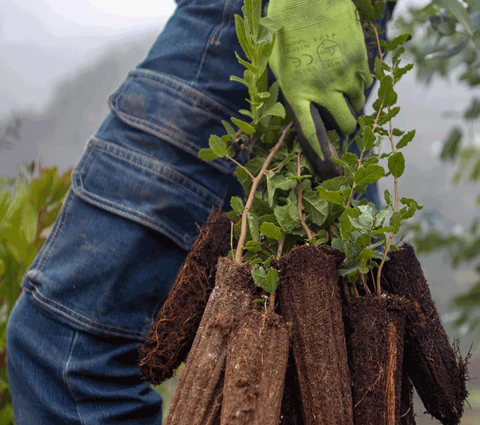
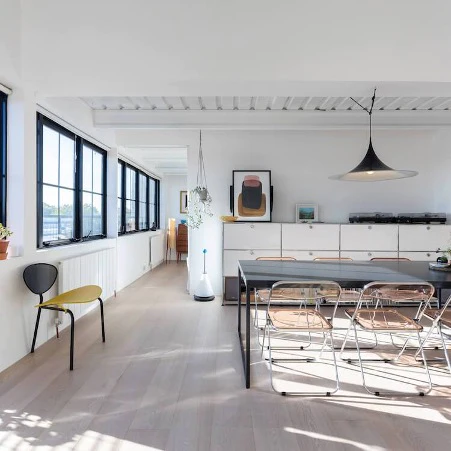
WHAT IS ENGINEERED WOOD FLOORING?
Whilst hardwood flooring is made entirely of solid wood (which is not environmentally friendly), engineered wood features a solid hard wood top layer (normally Oak, Walnut or Maple) which is fixed onto a supportive timber base. There are typically three different types of base structures:
- (Cross ply) Plywood back – The plywood is made of several layers of timber (normally Birch), with each layer’s grain running in opposite directions, ensuring the top layer has a hard, stable surface on which to adhere
- Sandwich board – A central ‘core’ layer has the top layer and base layer bonded to it. Each layer uses the same hard wood timber species (i.e. Oak, Walnut etc.) Each layer runs in alternate directions to improve stability.
- 3-Layer – which consists of a central core layer and a backing layer, usually made from Poplar
By using engineered construction methods, we can create five times the amount of flooring that you would get from the same amount of felled hardwood to create a solid board. This means we can be environmentally responsible to natural forests by cutting down less and planting more.
WHAT BENEFITS DOES ENGINEERED WOOD FLOORING HAVE?
Engineered flooring offers plenty of scope for interior designers and architects working on residential projects, such as:
- It’s compatible with underfloor heating
- It can be used in moisture prone areas such as bathrooms, kitchens, and walkways
- It’s easily installable, whether you let the boards rest on an underlay or glue it directly to a concrete screed or subfloor.
- It comes in a large range of colours, finishes and styles
By choosing engineered wood flooring for your project, you’re helping the environment. We only harvest older trees consuming less carbon and producing less oxygen. Utilising every inch of a tree, we consume one fifth of the material in comparison to solid wood.
WHAT IS PARQUET FLOORING?
Parquet flooring, also known as herringbone flooring, is made of short wooden battens slotted together in a geometric shape. It first became popular in the 1600’s for its beautiful, decorative, and long-lasting effect.
At The Solid Wood Flooring Company, we offer the following three types of parquet flooring:
- Chevron Parquet Wood Floors – this design utilises a zig-zag pattern, laid to form a true point, at a 45 or 60-degree angle.
- Herringbone Parquet Block Engineered Wood Flooring – this design is cut into rectangles and laid staggered in a zig-zag pattern.
- Parquet panels – this design features fixed-sized parquet panels that are always bordered and square, complete with a mansion weave pattern.
WHAT ARE THE BENEFITS OF PARQUET FLOORING?
Parquet flooring can be perfect for traditional residential properties capturing moments in time. It offers a range of benefits for your next project, including:
- It’s sophisticated look and pattern-arranging nature means you can create a unique look and feel for a room
- It’s easy-to-clean, stain-resistant, and doesn’t absorb odors.
- Unlike carpets and rugs, parquet flooring has no space to harbour allergens, dirt and dust, so it’s perfect for high-traffic areas and homes for young families and pets.
WHAT IS OPTIMUM FLOORING?
Optimum Flooring is the latest in sustainable, easy to fit flooring technology. It’s created using an AC4 commercial-grade wear layer, a real wood effect textured surface and a built-in EVA backing layer.
Optimum is ethically and sustainably sourced flooring made from wood and printed paper. It is manufactured using photographic technology to render surface images. It’s textured surface creates a more natural look than laminate, and is guaranteed to last for 15 years.
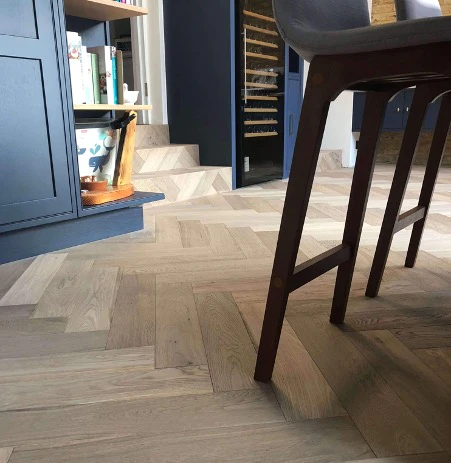
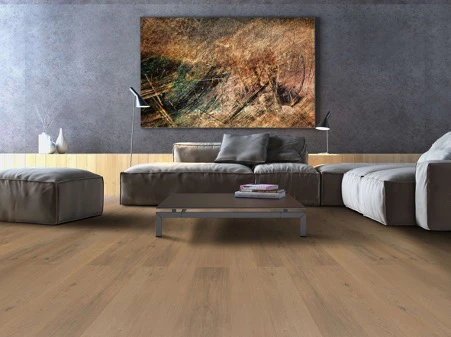
WHAT ARE THE BENEFITS OF OPTIMUM FLOORING?
Made with interior designers in mind, optimum flooring is perfect for both commercial and residential projects of any shape and size. It’s particularly suitable for high traffic areas in the home. It offers plenty of benefits, including:
- It’s quick installation, using patented click-lock technology
- It requires no underlay, as it’s built-in EVA backing layer is ready to place.
- It’s long lasting, with a guaranteed lifetime of 15 years.
WHAT IS IMPERVIA FLOORING?
Impervia is a waterproof, non-toxic, sound dampening, fire-resistant and low-slip flooring product made from composite stone and a commercial grade finish.
It is a 6.5mm thick floor with its own acoustic backing that looks and feels like real wood. Once installed it is difficult to tell the difference between Impervia and engineered wood flooring. It is generally priced at 50% less than good quality engineered wood flooring.
Available in wood effect planks, herringbone parquet, and marble and stone tiles, Impervia looks and feels like wood or stone.
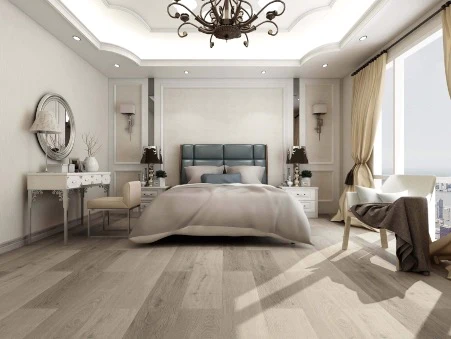
WHAT ARE THE BENEFITS OF IMPERVIA?
Designed for durability, Impervia’s porcelain tiles and luxury planks are a perfect solution to fit any space, whether it’s commercial or residential. Better yet, it’s the green safe option for flooring, certified by GREENGUARD and FloorScore by SCS. But it offers more benefits than just that, including:
- It’s 100% waterproof, so it’s perfect for kitchens and bathrooms
- No underlay is required, as every plank and tile has a built-in IPEX underlayer
- An easy installation thanks to it’s 5Gi push-fit system – planks really do just click together
- Combines the durability your project deserves with the luxury it desires, offering unique choices for architects and designers
BUT WHICH FLOORING IS BEST FOR MY PROJECT?
Every project is a puzzle, and every floor is unique. So, get in touch with us today to discuss which type of wood flooring is perfect for your next residential project now.
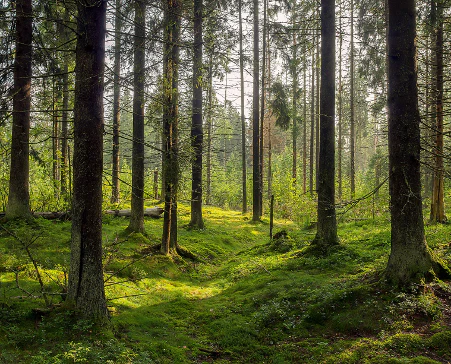
Today all we hear are companies declaring their products are ‘Sustainable, Fully Sustainable, Green and Eco Friendly’. These are the latest buzz words, but clients only want to buy ‘sustainable’ flooring for their projects. So, what is ‘sustainable’ flooring and how can you ensure what you buy and supply is truly that?
Sustainable flooring should be produced from sustainable materials, and by a sustainable process that reduces demands on ecosystems during its life-cycle. That’s the essence of sustainability, which includes harvest, production, use and disposal.
SUSTAINABLE WOOD FLOORING SHOULD NOT IMPACT THE ENVIRONMENT IN ANY WAY, THROUGHOUT ITS LIFE CYCLE, FROM HARVESTING TO DISPOSAL
Sustainable timber refers to timber that has been harvested responsibly from well-managed forests that are continuously replenished and ensure that there is no damage to the surrounding environment or native flora and fauna.
An increasing number of developers are looking for ways to be more sustainable with their projects, and when it comes to sustainable flooring, engineered wood fits the bill perfectly.
THE PROCESS OF MANUFACTURING ENGINEERED WOOD FLOORING USES FAR LESS OF THE TREE PER PLANK THAN A SOLID HARDWOOD FLOOR
Our manufacturing processes alone make it a more sustainable, environmentally friendly and natural wood product. The process doesn’t involve toxic glue, making engineered wood flooring better for your health.
Bamboo, although a very sustainable product, uses very toxic glues in its manufacturing process, which can contaminate the air you breathe. Cork is made from organic and renewable materials that are both biodegradable and recyclable, making it a versatile and sustainable product for the environment.
Oak floors are considered one of the most sustainable options because forest management protection programs and regulations make sure these trees are regularly replanted in forests. Oak also has a smaller carbon footprint and releases fewer toxic emissions during the manufacturing process than other options.
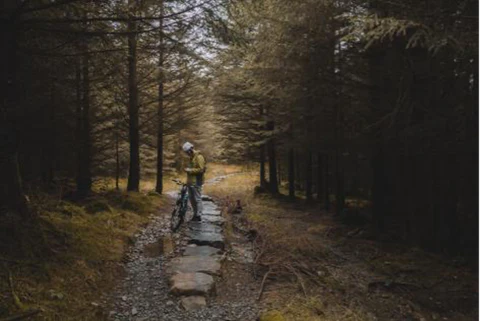
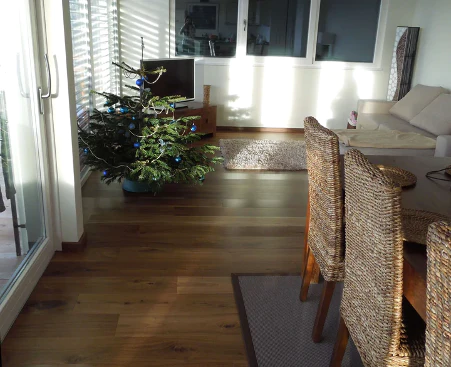
ALWAYS LOOK FOR OFFICIAL CERTIFICATION OF THE WOOD’S SUSTAINABLE SOURCE, EVEN IF IT SAYS IT’S FROM THE EU
To ensure you only buy sustainable wood, you should always lookout for the FSC’s official certification. Their internationally recognised standards provide complete assurance that you’re purchasing from sustainable sources and thereby protecting the planet’s forests for future generations.
If you find a retailer with a sustainable or green logo on their website, check to see what it means. It may be that all their products are ethical, but equally, there could be just one product that fits the bill.
IF YOU CAN’T FIND THE INFORMATION YOU NEED TO CLARIFY THE PRODUCT YOU WANT IS SUSTAINABLE, DON’T BE AFRAID TO ASK.
The Solid Wood Flooring Company, despite the name, manufactures engineered wood flooring.
We unreservedly condemn illegal logging or sourcing material from deforested regions. Therefore, we never harvest materials from rainforests and will not manufacture some exotic wood species. Sadly, so much timber from these areas comes from questionable sources. With modern oiled finishes, we can create a vast choice of colour tones on Oak flooring, so it seems so wasteful that people are still selling flooring that comes from our ever-reducing rainforests.
We only manufacture our own wooden flooring and can therefore control the sources of our raw material, unlike a number of our competitors who buy from traders.
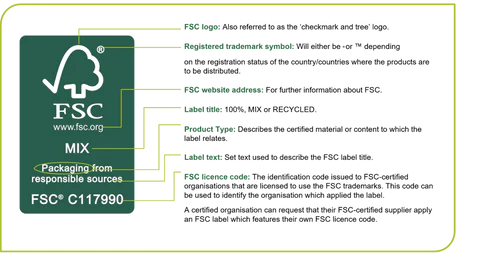
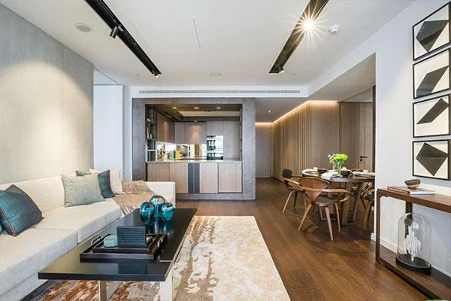
WE ARE FSC AND PEFC CERTIFIED, WITH MEMBERSHIP TO THE TIMBER TRADE FEDERATION AND A RESPONSIBLE PURCHASER WITH FULL CHAIN OF CUSTODY
This means that all our certified flooring can be traced to the responsibly managed forest where it was harvested. This is just one of the ways we ensure all our products are sustainably sourced.
You can view our certification here:
Remember, when you’re investing in sustainable products, use this checklist:
- Buy FSC and PEFC certified products.
- Research websites for documents and certificates.
- Buy engineered wood flooring, not solid wood flooring.
- Establish that the wood comes from well-managed forests.
- If in doubt, ask.
You can learn more about our commitment to sustainability here.
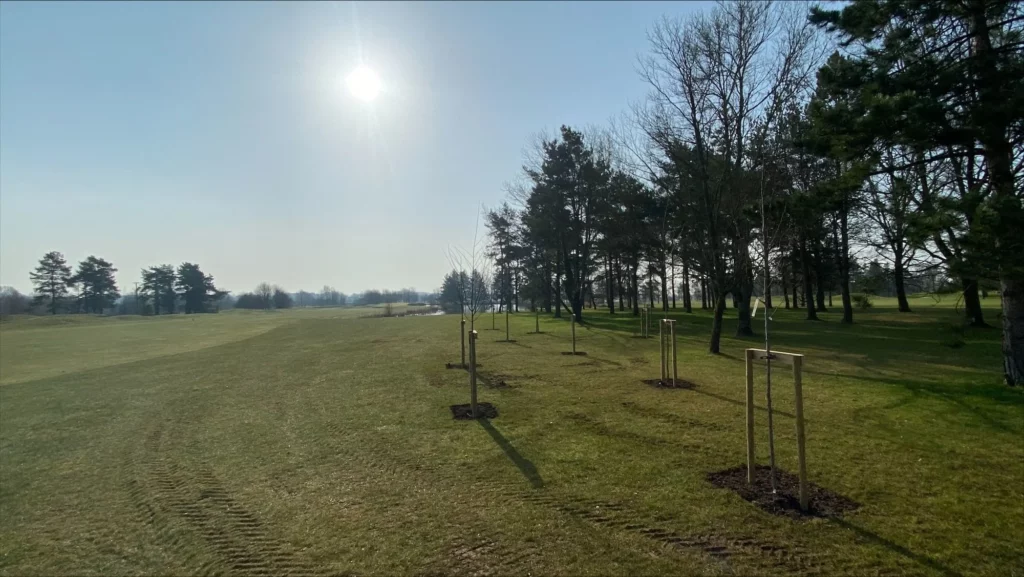
Sustainability is in our DNA. Our mission of sustaining our planet home’s future forms part of the principles we operate on. Whilst we continue to forge ahead and find innovative ways to move forward the flooring industry, we also look for new ways to strengthen our commitment to creating sustainable practices.
PLANTING OVER 50 TREES WITH MINCHINHAMPTON GOLF CLUB
In our continued efforts to reduce our carbon footprint and supply sustainable wood flooring, we teamed up with Minchinhampton Golf Club.
As part of this, we funded the planting of over 50 mixed oak and beech trees. The project required larger more mature trees, in an area of outstanding natural beauty in the Cotswolds.
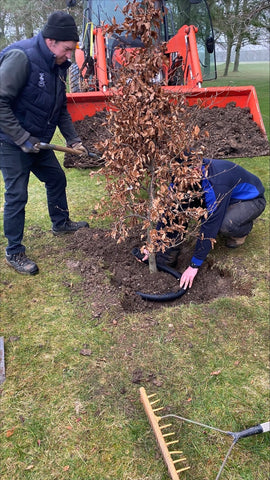
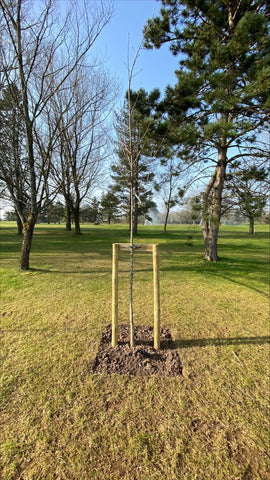
We happily partner with ventures that encourage the protection and impact we make to the environment by planting trees and giving back what we take.
SUSTAINABLE LIVING STARTS WITH SUSTAINABLE FLOORING
By choosing to repurpose a building rather than demolishing it, you’re not only offering a solution to the climate change crisis but creating sustainable living environments.
Aiming to reduce personal and societal environmental impact, sustainable living promotes positive changes to counteract clime change. Sustainable living encourages us to minimise our use of the Earth’s resources, and reduce the damage of human and environmental interactions.
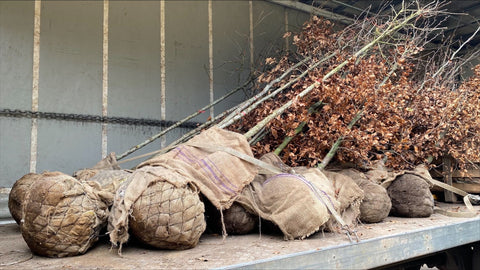
Whilst there is no perfect picture of sustainable living or a blueprint for achieving zero net living, there are steps we can all take. For us, sustainable living starts with sustainable design, which will always need sustainable flooring. If you’ve got a project coming up, help our commitment to sustaining our planet’s future by choosing a sustainable design.
You can learn more about our promise to develop sustainable flooring for sustainable living here.


